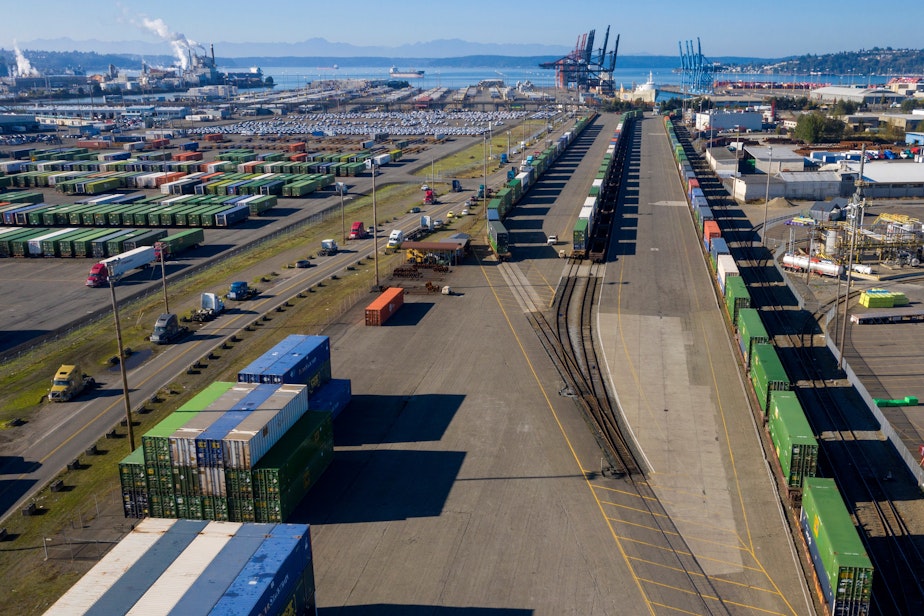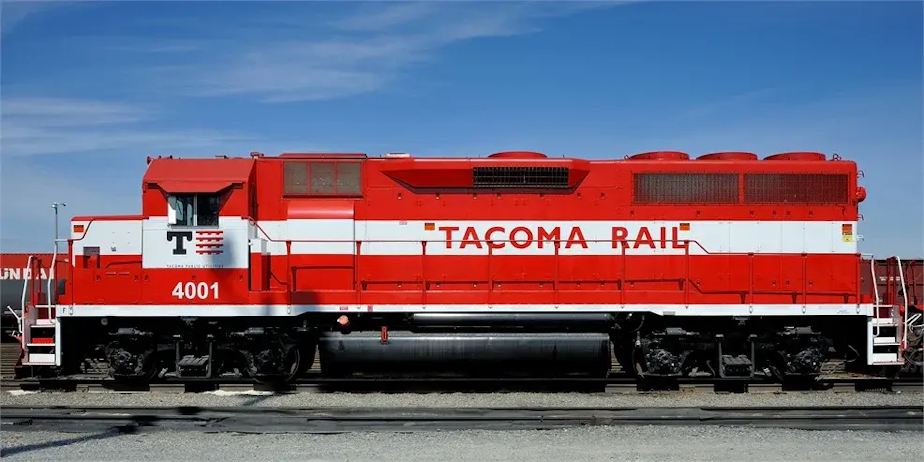Tacoma Rail to buy Northwest’s first electric locomotives

City-owned Tacoma Rail is buying the Northwest’s first electric locomotives.
You might have played with electric trains as a child, but most life-size trains in the United States run on diesel, and the rail sector is far behind the automobile sector in moving to less-polluting energy sources like electricity.
Diesel exhaust contains lung-damaging particulates and, like all fossil fuel exhaust, contributes to overheating the planet.
Tacoma Rail has received federal and state funding to replace two of its 14 diesel “switcher” locomotives with battery-powered ones that emit zero pollution.
Switchers maneuver railcars around the tight curves of the rail lines at the Port of Tacoma before handing them off to the larger locomotives that haul freight around the country.
“These are brand new in the industry, so it's exciting to have those in the Northwest, especially with our sister utility Tacoma Power that uses hydroelectric power,” McCabe said. “So, these are about as green as they can possibly be.”
McCabe said each locomotive’s battery would hold more than 2 megawatt-hours of energy, about as much as 29 electric car batteries. Tacoma Rail estimates the two short-haul locomotives and charging infrastructure at the Port of Tacoma will cost nearly $13 million.
McCabe said the funding for the purchase should be available by 2025, when the diesel switchers being replaced will be 60 years old.

In July, the Port of Tacoma Commission voted to phase out planet-heating greenhouse gas emissions under the port’s direct control by 2040, 10 years sooner than the port had pledged to do in 2021.
Electrifying long-distance trains could make a bigger dent in pollution, but it’s also a taller order.
Most railroad tracks in the United States are privately owned, and getting railroad companies to electrify their tracks could be an uphill climb.
In June, the Association of American Railroads sued to block California’s newly passed requirements for zero-emission locomotives. The regulation approved by the California Air Resources Board in April bans the use of pre-2007 locomotives in 2030 and bans the sale of fossil-fuel locomotives for passenger trains in 2030 and for freight trains in 2035.
“We've not heard from BNSF or [Union Pacific] or anybody that they have any plans to electrify the lines out here in the Pacific Northwest,” said Jason Biggs with the Washington state Department of Transportation.
BNSF Railway spokesperson Lena Kent did not respond to an interview request.
Rail experts say batteries aren’t powerful enough yet to run long-distance trains, though a 2021 pilot project funded by the California Air Resources Board demonstrated they can be incorporated into multi-locomotive trains.
For three months, BNSF hauled freight shipments through California’s San Joaquin Valley in a train with two diesel locomotives and one battery-powered locomotive. Manufacturer Wabtec said incorporating the electric locomotive reduced the train’s fuel use and emissions 11%.
In an email, Wabtec spokesperson Tim Bader said the company is currently building its second-generation electric locomotive, with a battery three times more powerful than the one used in the 2021 pilot, and with orders from customers in North America, South America, and Australia.

